
The eyes are complex, fascinating structures, as well as being beautiful and mysterious. Our ability to take in light and transform that into vision is extraordinary. Cats’ eyes are beautiful, but can you imagine what it would be like to view the world through a cat’s eyes? Have you ever wondered how your cat sees the world? Do they see as well as us—or even better?
Key Takeaways
Cats’ eyes differ physically from ours, with elliptical pupils, a third eyelid, and different proportions of rod and cone cells in the retina.
Cats have greater peripheral vision, can track swift-moving objects, and can see well in the dark, but have less acute vision at distance and a more muted color spectrum.
Humans have excellent visual acuity in daylight and see a range of bright colors, but have a narrower range of vision and don’t see well in low light levels.
Cats see better in low light levels than humans and have greater peripheral vision, but their color spectrum and distance acuity are poor. Read on for more details about cats’ vision and how it differs from our own.
The Anatomy Of Eyes

A cat’s eyes have distinct features that allow them to function with a cat’s needs in mind.
Cats’ eyes look different from ours: the size and shape, pupil orientation, and internal anatomy of these delicate structures all vary between humans and cats. These differences lead to variations between cat vision and human vision.
The Retina
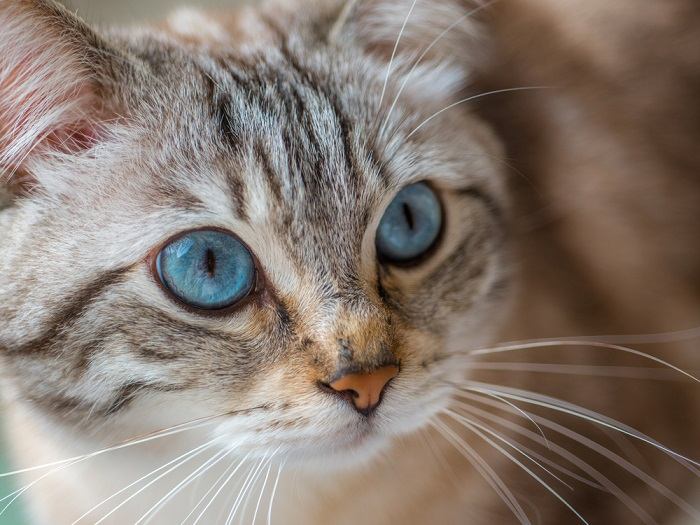
Cats have more rods than cones, which means they see very well in low-light conditions.
A key difference between human and feline eyes is found in the retina: the key layer of tissue right at the back of the eye. The retina contains photoreceptors, cells that take the light coming into the eyes and convert it to electrical signals, which get sent to the brain to form the images that we see.
There are two types of light receptors: rods and cones. Cone cells are associated with daytime vision and color perception. Rod cells are responsible for vision in dark environments and peripheral vision.
Cats, alongside other mammals such as dogs, have a high percentage of rod cells and fewer cones. Humans are the opposite, with the human retina containing more cone cells, which is why we have excellent color vision but can’t see well in low light levels.
Also Read: How Progressive Retinal Atrophy Affects Cats
The Third Eyelid
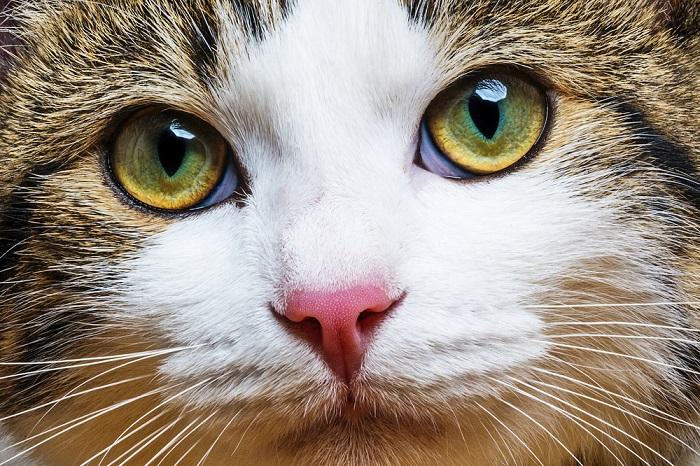
A cat’s third eyelid protects the surface of the eyeball from dust and debris.
Cats have a useful ocular structure called a nictitating membrane, or third eyelid. This is made up of folds of tissue covered in the conjunctiva, and it rests just in front of the surface of the eye (cornea). Its role is protective: It can sweep across the cornea, wiping away debris and coating the surface with tear film. This is highly useful in cats, as being closer to the ground than us, they are more likely to get dust and other debris onto the sensitive and fragile surface of the eye.
Also Read: Entropion In Cats: Causes, Symptoms & Treatment
Pupil Size And Shape
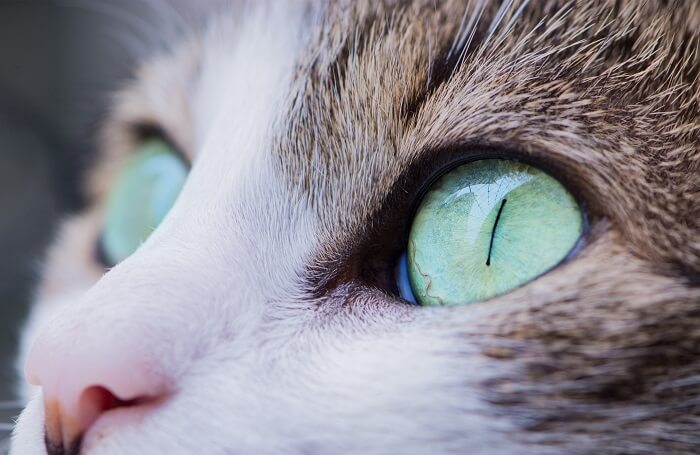
A cat’s elliptical pupil help with depth perception and distance assessment while the cat is hunting.
The human eye contains a round pupil, similar to many other animals’ eyes such as dogs and tigers. Cats, on the other hand, have an elliptical pupil which can narrow to vertical slits. This type of pupil is usually found in animals that hunt close to the ground and need to be super stealthy to catch their prey.
The vertical pupils assist these expert predators with depth perception and distance assessment without moving their heads, allowing optimal stealth. It is interesting to note that larger cat species, such as the tiger, have round pupils.
Also Read: Why Is My Cat Staring At Me? Top 5 Reasons Explained
What Can Cats Actually See?

Some aspects of a cat’s vision are superior to a human’s, but others are inferior.
Now that we know how cat eyes differ from our own, we can try to understand the way that cats see the world. Cats see what people see, just a little differently.
The Visual Field
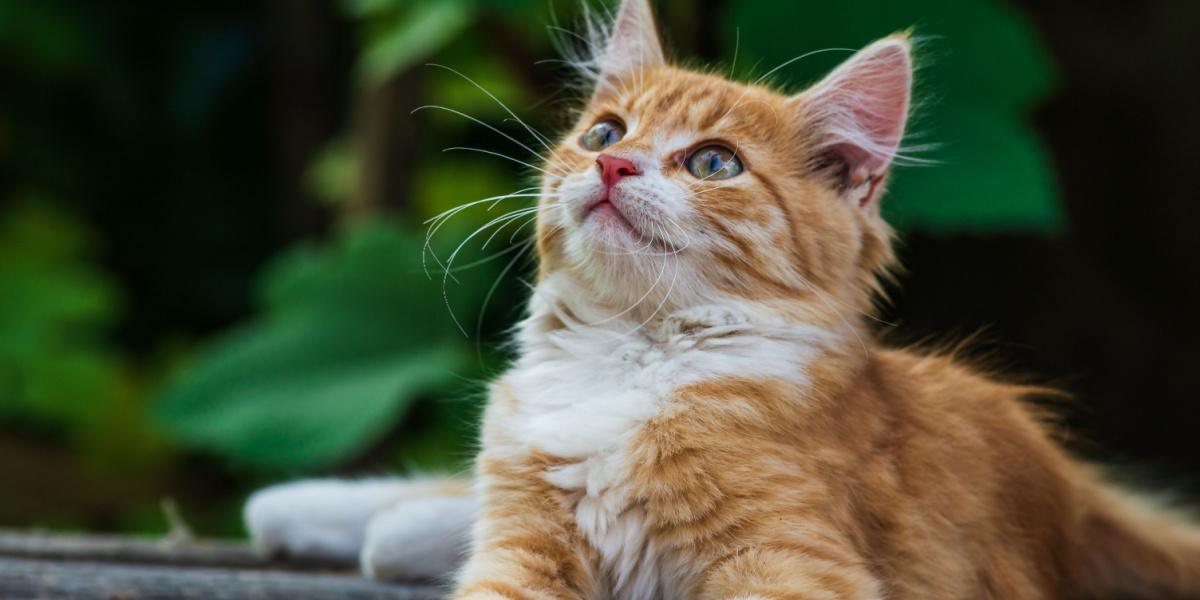
A cat’s peripheral vision is better than a human’s, something that helps them be good hunters.
If you look at an object, the visual field is everything that you can see at that moment—the area around, above, below, and to the sides of where you are focusing. A human’s visual field is about 180 degrees. Cats have a larger visual field, at around 200 degrees. A cat’s higher numbers of rod cells help increase their peripheral vision compared to ours.
Cats’ eyes are forward facing, just like humans, but the increase in the visual field helps them to take in more of their surroundings, for greater hunting capability. Cats also have better motion detection than humans, allowing them to track fast-moving prey such as small mammals.
Also Read: The 7 Types Of Eye Color In Cats
Visual Acuity
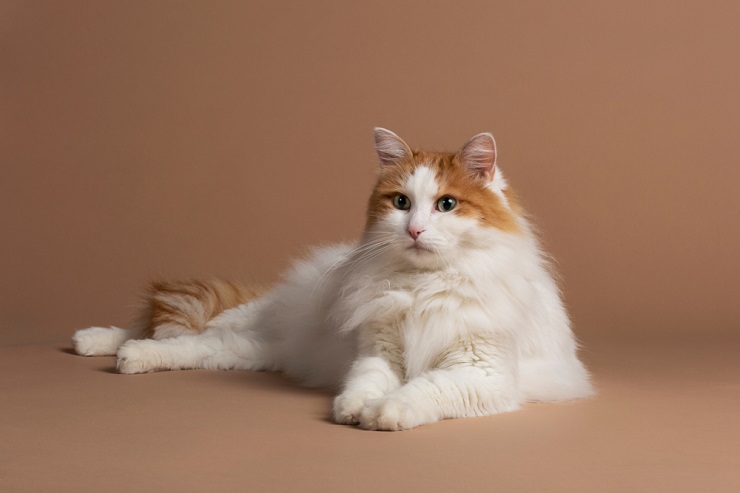
Cats can see things less clearly past distances of 20 feet.
Compared to humans, cats have much less clarity of vision. We can see at quite good distances, able to focus on objects up to 200 feet away from us. In cats, this acuity is much less, with their focus only able to extend to around 20 feet ahead. Cats have less need for good distance vision, as they tend to rely on stealth to get very close to their prey.
Also Read: Are Laser Toys Safe For Cats?
Color Vision

No one knows the exact range of colors cats see, but it’s likely similar to humans with red-green colorblindness.
Humans have three types of cones in the retina, allowing them to see shades of red, green, and blue. This leads to us being classified as “trichromats.” Cats are also technically trichromats, but their lower concentration of cone cells means that they are unlikely to see vibrant color.
Their world is probably much more muted, in more pastel shades than different colors, and possibly similar to the vision of a human with color blindness. A cat’s color spectrum likely includes blue and yellow, but, similar to a person who is red-green colorblind, they might find colors such as red just appear gray or dark.
Also Read: Heterochromia In Cats: Cats With Different Colored Eyes
Night Vision
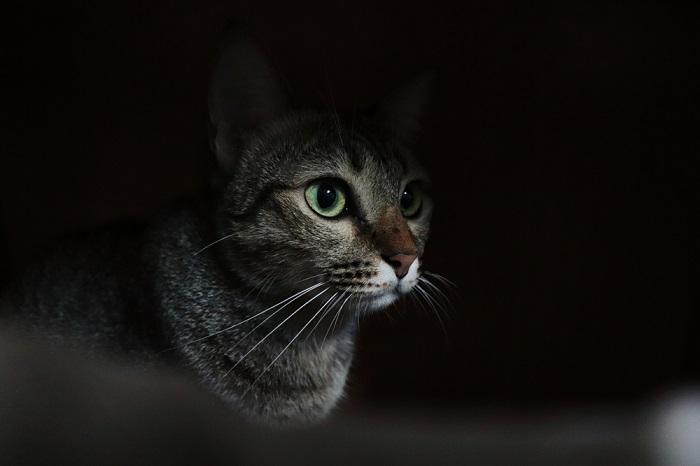
Cats’ nighttime vision is far superior to humans’ but their daytime vision is worse than ours.
Cats are crepuscular, meaning they are most active at dawn and dusk when the amount of light is usually minimal. Their night vision reflects this, as their high numbers of rods make their eyes more sensitive to less light levels, giving cats a superior ability to operate at night time than us. This does, however, mean that their daytime vision is not as acute as ours.
Cats also have another trick up their sleeves to help with their crepuscular habits. They have a “tapetum lucidem,” a reflective layer of cells found behind the retina. Light can bounce back from this reflective surface, giving it another chance to hit a rod or cone cell and be translated into vision. The tapetum is also the reason cats seen in the dark have eyes glowing spookily bright!
Also Read: Can Cats See In The Dark?
Conclusion: Who Has Better Vision?
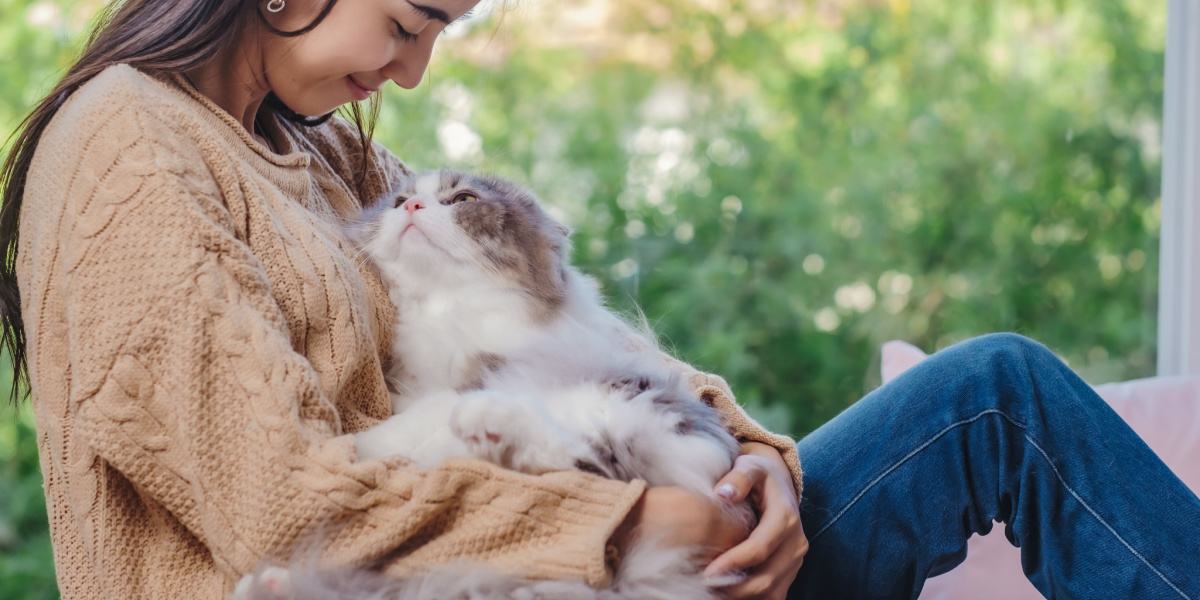
Human vision and cat vision suits each species according to their needs.
It is difficult to compare human to animal vision and emerge with a clear winner. Cats and people have different strengths and weaknesses in our eyesight, as we are both designed for the optimal survival of our species.
Cats have poor distance vision and a smaller color spectrum, but they see well in low light levels and have better peripheral vision than us. Humans have a fabulous ability to see well in the daytime, and at distance, but have a narrower field of vision and would regularly bump into things in the dark! I think I’d call it a tie, wouldn’t you?
Also Read: Understanding Your Cat’s Five Senses
Frequently Asked Questions
Who has the better eyesight, humans or cats?
Cat vision varies a lot from humans, and they both excel in their own ways. Humans can see better in the daytime, see more vibrant colors, and are better at distance vision. Cats have better peripheral vision, see well in low light levels, and are excellent at tracking fast-moving objects.
Can a cat see further than a human?
No, cats have good peripheral vision, but their distance vision is not very good. They can probably only focus around 20 feet in front of them, whereas humans can see well at distances of 100 to 200 feet!
Do cats have the best vision?
A cat’s eyesight is very good at certain things, such as seeing well in dim light, peripheral vision, and tracking fast-moving objects. However, they are not so adept at seeing well into the distance, and also have a more muted color spectrum.







